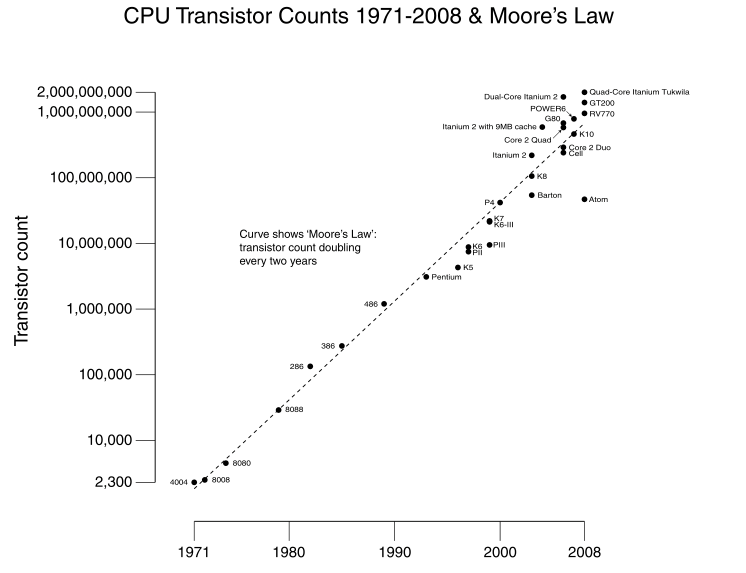
Open-Source Internship opportunity by OpenGenus for programmers. Apply now.
Reading time: 15 minutes
Moore's law is the observation that the number of transistors in a dense integrated circuit doubles about every two years.
In simple terms, it states that computing would dramatically increase in power, and decrease in relative cost, at an exponential rate.
Moore's law is captured by the following image:

Origin
Gordon Earle Moore (Founder of Intel) predicted the two-year doubling trend based on what he had seen happen in the early years of computer-chip manufacture.
In his 1965 paper, he plotted the number of transistors that fit on a chip since 1959 and saw a pattern of yearly doubling that he then extrapolated for the next 10 years. He later revised the trend to a doubling about every two years.
Usage
Moore's law is used for the following:
-
Set development and research goals in semi-conductor and processor technology in companies and research institutions
-
Made the progress in processor technology predictable over the last fifty years
-
Maintained a healthy and deterministic competition among processor companies such as Intel
Future
Many technologists have predicted the demise of Moore’s doubling over the years and Moore himself states that this exponential growth cannot last forever.
His law, still, persists today, and hence the computational growth it predicts will continue to profoundly change our world. As he put it: “We’ve just seen the beginning of what computers are going to do for us.”
Similar laws in other fields
Eroom's law is a pharmaceutical drug development observation which states that the cost of developing a new drug roughly doubles every nine years.
Interesting readings
- Over 50 years of Moore's Law published by Intel
